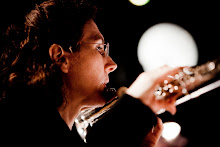In response to the question "How should I practice articulation?", I always answer "everything is an articulation exercise, or can be adapted into one". Spending more money on expensive Leduc editions will not help your tongue. Reading theories about where the optimal point of articulation is (behind the teeth, on the palate, between the lips) can give you ideas but not answers, since nobody seems to be in 100% agreement.
Since nobody can look into your mouth and tell you where to put your tongue, I'll repeat another truism: all articulation practice is tone practice. Your ears will tell you what works. Good articulation requires just as much awakening of the ears as the tongue.
"But I have an OK tone, it's just when I use my tongue for any amount of time it starts to sound bad!", you may answer.
"Good!" I say, "So the ears are switched on."
The short answer to this problem is that when you engage the tongue, the air behind it has to keep going despite a short interruption. Many players forget this and instead of increasing abdominal support to keep the energy behind the air stream they tighten the embouchure, or even worse, use the jaw to help the tongue! This is what causes fatigue and lack of control in long articulated passages.
It could also be the tongue is working too hard. My former teacher Bernard Goldberg used to admonish me be saying "you are only slicing air, not last week's bagels".
There are a few checkpoints: maybe the distance between the Du and Gu of double tonguing is too great. Some find it useful to shorten this distance by thinking the Du Gu action as having a vertical (up and down) dimension to it as opposed to just a back-and-forth motion.
How to establish efficiency? There are no shortcuts. I'll go out on a limb and say that if you seriously, seriously devote time to this aspect of playing, your body can't help but adopt the most efficient means possible - if you include your ears and brain in the process. The ears tell you when it's good and your brain tells you to stop, re-investigate when it's not good or when you're fatiguing yourself. This process will repeat itself a zillion times. Like any muscular activity we need diligent, consequent practice and patience to establish new habits.
Try the following with Mendelssohn's Scherzo, it's an adaptation of Aurèle Nicolet's method:
Break the solo into manageable passages (for example, the first passage could be the first 13 complete bars)
Play the passage slowly legato - each note focused and resonant
Play the passage slowly with ha ha articulation (no tongue!)
Play the passage with flutter tongue (either kind, throat or tongue)
Play the passage double tonguing every single written note (g,g,b-flat, b-flat,c,c,d,d,etc...)
Play the passage as written
You notice I try to avoid advice on placement and mechanics of the tongue, and mention of particular "schools" like the French School, which is supposedly the ace of articulation. That may well be, but listen to old recordings from the early 20th century English virtuosi, holy smokes, they could hold their own! Also, South Indian musicians, whose native Dravidian languages use retroflex sounds, where the tongue is actually pointed backwards, can move their tongues at lightning speed. Just listen to any mrdangam player doing the rhythmic solmization of konnakkol (that ta-ki-di-mi stuff)!
In a nutshell:
Ears are just as important as the tongue.
Remember the air produces the sound, not the tongue.
Invest wisely, get more on your return! In this case it means a long-term committment to intelligent practice.
Saturday, February 13, 2010
Subscribe to:
Post Comments (Atom)


No comments:
Post a Comment